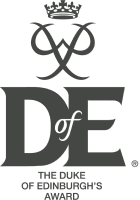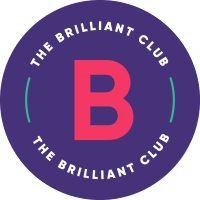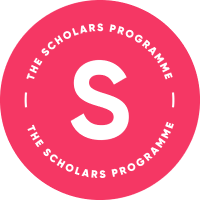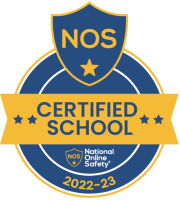This subject is part of the Faculty of Arts and Creative Technologies
Our Head of Faculty is
Mr R Down rdown@tcat.school
Our subject teacher and email address is
Mr R Down rdown@tcat.school
Our subject intent
Is to provide the opportunity for students to learn and develop practical and technological skills.
Through our teaching we aim to develop creative thinkers who can respond to challenges and develop ideas and products that relate to the real world and show an understanding of technical, social, economic, environmental issues and industrial practices.
We are fortunate to have two rooms which enable us to deliver a broad range of techniques and experiences. There is a classroom with computer facilities where pupils can research and plan their ideas and a well equipped workshop to develop practical work.
Curriculum Subject Offer
Year 7 DT
Subject intent
Introducing the subject to students who may have enjoyed some experience in Design Technology during primary school but may have been limited by resources available.
Lessons are arranged 5 per week in a 5 or 6 week block after which each group moves on to another subject area – e.g. from Art to DT to Food. There are two rotations per year giving all students a fair distribution of subject experience across the academic year. The final half term of the year consists of 3 short skills-based modules of two weeks each to support progression into the following year.
In year 7 pupils complete a course designed to cover the basic skills in Resistant Materials. They will begin with a guide to the workshop which will cover health and safety aspects of the equipment used. With their initial Maze project, they will be introduced to basic skills such as planning/designing, measuring and cutting materials.
A further wood based project making toy vehicles helps consolidate skills in marking out and working with wood as well as using formal drawing methods to accurately present ideas.
Topic Breakdown
|
Module 1 |
Module 2 |
| Workshop procedures and safety
Familiarisation with workshop tools and equipment Drawing and presentation skills Maze / toy project |
Designing and adapting ideas to suit a purpose
Formal drawing methods Wooden vehicle practical project Evaluation of outcome |
You will be assessed at various points during the module when key pieces of work are done and at the end of the module when practical projects are completed. An independent study task will give you the opportunity to extend your knowledge and will also be assessed.
DT full Scheme of Work - Year 7
Year 8 DT
Subject intent
Students complete a course designed to cover the basic skills in Resistant Materials. They will begin with a guide to the workshop which will cover health and safety aspects of the equipment used. With their initial Maze project, they will be introduced to basic skills such as planning/designing, measuring and cutting materials.
In year 7 you learnt about workshop safety and a range of wood-working skills including using machines and workshop equipment. You also learned to use various drawing techniques to present your ideas effectively.
During Year 8 you will learn to design in response to a need and to determine how a product might be adapted to suit a user other than yourself. You will work with metal and use heat processes to shape and join components. You will explore a variety of forming and shaping techniques and appreciate how these are used in industrial settings.
Lessons are arranged 5 per week in a 5 or 6 week block after which each group moves on to another subject area – e.g. from Art to DT to Food. There are two rotations per year giving all students a fair distribution of subject experience across the academic year. The final half term of the year consists of 3 short skills-based modules of two weeks each to support progression into the following year.
Topic Breakdown
|
Module 1 |
Module 2 |
| Garden tools project to include:
Research and product analysis Analysing user needs Design including use of CAD Metal working skills including cutting, shaping and joining components. |
Dream-house project to include:
Designing and adapting ideas to suit a purpose Presenting ideas using a variety of graphical techniques including CAD Drawing to scale including practical floor-plans Chocolate mould project to include: Forming thermoplastics Adapting a design to suit a user or purpose ‘Casting’ chocolate into a mould Appreciating scales of production within an industrial context. |
You will be assessed at various points during the module when key pieces of work are done and at the end of the module when practical projects are completed. An independent study task will give you the opportunity to extend your knowledge and will also be assessed.
DT full Scheme of Work - Year 8
Year 9 DT
Subject intent
We develop skills in preparation for year 10 and 11 work. Students will be able to develop more independent projects and ideas.
In year 8 you learnt about designing in response to a need and to determining how a product might be adapted to suit a user other than yourself. You worked with metal and used heat processes to shape and join components. You explored a variety of forming and shaping techniques and how these are used in industrial settings.
During Year 9 you will learn how to apply your learning about shaping and moulding metals to create a high-quality product such as a piece of jewellery. You will also design and respond to a brief to create a passive amplifier to suit a mobile phone. Throughout this process you will work increasingly independently, using various sources to inform your design and problem solving skills.
Lessons are arranged 5 per week in a 5 or 6 week block after which each group moves on to another subject area – e.g. from Art to DT to Food. There are two rotations per year giving all students a fair distribution of subject experience across the academic year. The final half term of the year consists of 3 short skills-based modules of two weeks each to support progression into the following year.
Topic Breakdown
| Module 1 |
Module 2 |
| Personal adornment project to include:
Research into the purposes and functions of jewellery Uses of materials and combination of metals Working with precision to create moulds for casting Finishing a product to a high standard Packaging and presenting products of retail |
Passive amplifier project to include:
Designing a passive amplifier based on scientific principles Working with wood and manufactured wood products to create an aesthetically pleasing product Finishing products to a high standard to improve user experience and aesthetic appeal. |
You will be assessed at various points during the module when key pieces of work are done and at the end of the module when practical projects are completed. An independent study task will give you the opportunity to extend your knowledge and will also be assessed.
DT full Scheme of Work - Year 9
Within each subject we have our own specific personalised marking and feeback policy.
|
Arts and Creative Technology |
||
|
|
KS3 |
KS4 |
|
Verbal dialogue |
Teachers circulate with purpose, checking pupils’ work and collecting information on whole-class strengths, skill development, errors, misconceptions, knowledge gaps etc. The teacher adjusts their lesson accordingly. |
Teachers circulate with purpose, checking pupils’ work, providing feedback if appropriate and collecting information on whole-class strengths, errors, misconceptions, knowledge gaps etc. The teacher adjusts their lesson (or SOW) accordingly. |
|
Self/peer assessment |
Verbal or written feedback through strengths/targets and annotations. If written, peer and self-assessment should be completed in blue pen. |
Verbal or written feedback through strengths/targets and annotations. If written, peer and self-assessment should be completed in blue pen. |
|
Whole Class Feedback |
When pupils complete extended pieces of work, teachers will look through a sample of work from each class they teach and note pupils’ strengths and targets. Teachers will then use this information to provide whole class feedback on what pupils are doing well and how pupils can improve their work further. As this type of marking involves the teacher looking at a sample of work, the teacher will use a rotation system to ensure that the work of all pupils is looked at on a regular basis. Where books are not used, verbal responses from pupils or video evidence can be used. |
When pupils complete extended pieces of writing, teachers will read through a sample of books from each class they teach and note pupils’ strengths and targets. Teachers will then use this information to provide whole class feedback on what pupils are doing well and how pupils can improve their work further. As this type of marking involves the teacher looking at a sample of books, the teacher will use a rotation system to ensure that the books of all pupils are looked at on a regular basis. Where books are not used, verbal responses from pupils or video evidence can be used. |
|
Written comments |
Teachers within the department will either: 1. Check through the work of all pupils and use a marking code to indicate the strengths and targets of the work. The marking code will be shared with all pupils and pupils will be given precise instruction about how to improve their work. OR 2. Read through the work of all pupils and write a strength comment and target comment at the end of the piece of work. OR 3. Record evidence of work through suitable media, providing pupils with a strength and target comment relevant to the piece of work. SPAG Teachers will identify where pupils make errors in their spelling, punctuation and grammar and pupils will be given time in lessons to make corrections (by circling errors where SPAG mistakes appear). If several pupils in a class are making the same spelling, punctuation or grammar error then the teacher will address this with the class. |
Teachers within the department will either: 1. Read through the work of all pupils and use a marking code to indicate the strengths and targets of the work. The marking code will be shared with all pupils and pupils will be given precise instruction about how to improve their work. OR 2. Read through the work of all pupils and write a strength comment and target comment at the end of the piece of work. OR 3. Record evidence of work through suitable media, providing pupils with a strength and target comment relevant to the piece of work.
SPAG Teachers will identify where pupils make errors in their spelling, punctuation and grammar and pupils will be given time in lessons to make corrections (by circling errors where SPAG mistakes appear). If several pupils in a class are making the same spelling, punctuation or grammar error then the teacher will address this with the class.
Written feedback forms part of the module feedback process in vocational courses. This is intended to be summative for that unit/module but formative toward improvement in the following unit/module. |
|
Frequency of feedback |
Live feedback and responsive teaching will take place in most lessons where pupils have been asked to complete extended pieces of work. * Whole-class feedback will take place once a week. Peer/self-assessment When deemed to be the most effective method of assessing work produced in lessons Written comments will take place after between 10 and 15 lessons (around twice per term), as appropriate for the pace of the class. OR Once per module/rotation.
|
Live feedback and responsive teaching will take place in most lessons where pupils have been asked to complete extended pieces of writing. * Whole-class feedback will take place once a week. Peer/self-assessment When deemed to be the most effective method of assessing work produced in lessons Written comments will take place after between 10 and 15 lessons (around twice per term), as appropriate for the pace of the class. There may be several lessons where pupils do not write extensively. Instead lesson time will be used to: (for example) read and discuss the musical scores; annotate the text/diagrams; make notes about the set-works; complete short comprehension activities. |
|
Response to feedback |
When directed after marking/whole class feedback, pupils will be expected to make a response in blue pen OR Make media application of their feedback in their ongoing work. In some instances, pupils will be expected to put the title DIRT and either re-draft an entire piece of work or a section of the piece of work according to the teacher’s instructions. In other instances, pupils will be expected to apply their feedback in the form of transferable skills applied in a new task. This would be done in blue pen when relevant. In further instances, pupils may be asked to answer questions posed by the teacher. Responses to spelling mistakes include writing out misspelled words such as subject specific vocabulary or key words. |
When directed after marking/whole class feedback, pupils will be expected to make a response in blue pen OR Make media application of their feedback in their ongoing work. In some instances, pupils will be expected to put the title DIRT and either re-draft an entire piece of work or a section of the piece of work according to the teacher’s instructions. In other instances, pupils will be expected to apply their feedback in the form of transferable skills applied in a new task. This would be done in blue pen when relevant. In further instances, pupils may be asked to answer questions posed by the teacher. Responses to spelling mistakes include writing out misspelled words and listening to explicit teaching of spelling (etymology etc.). |
|
Summative assessment |
1 x formal assessment each half term or module rotation. A piece of extended work which is marked using comparative judgement on the No More Marking platform. Band boundaries are applied to the assessments once judged, as stated in the SOW. |
1 x formal assessment each half term. A piece of extended writing which is marked using comparative judgement on the No More Marking platform. Band boundaries are applied to the assessments once judged. This might be a practical piece or some written work, as stated in the SOW. |






